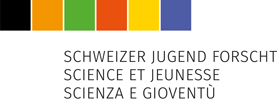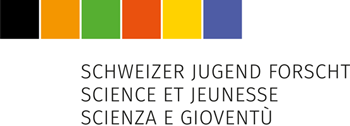Biologie | Umwelt
Anna Stricker, 2002 | Davos, GR
This study investigates the composition of residential waste in the city of Davos, Switzerland. 30 garbage bags were randomly sampled from pre-specified areas, resulting in a total sample of about 130 kg of residential waste. The waste was separated into 14 different components: aluminum, electronic waste, tin, Tetra Paks (beverage containers), glass, polyethylene terephthalate (PET), other plastics, cardboard, paper, organic waste, food waste, coffee capsules, scrap metal and residual waste. 78% of the waste was either recyclable or should have been fermented at biogas plants rather than incinerated to increase its energy yield. The energy-saving potential for all recyclable components in the waste was estimated at 11,756 GJ, which corresponds to the annual power consumption of 583 average four-person households in Switzerland. In terms of carbon emissions, recycling has the potential of saving 5,196 t of CO2 in Davos. This is equivalent to the annual emissions of 371 people living in Switzerland or to the amount one person emits when driving around the earth 1,013 times by car. Therefore, the need to improve currently available recycling opportunities as well as create new ones needs to be recognised by the local, regional and national authorities.
Introduction
(I). How large is the proportion of recyclable materials in the residential waste of Davos? (II). How large is the ecological impact of these recyclable materials?
Methods
30 garbage bags were collected by the staff of the local waste collection site from pre-specified areas representing permanent residents (15 bags, randomly selected) and second-home owners (15 bags, randomly selected). The content of each of the bags was separated by hand into the 14 components mentioned above. All the components were weighted individually and were the base of all results presented in this study. Calculations were done with Julia 1.3.1 using Jupyter notebooks and common office spreadsheet software.
Results
There was no significant difference in the 14 waste components between permanent residents and second-home owners. In an estimated total of 4,091 t of residential waste per year, a proportion of 78% was either recyclable or should have been fermented at biogas plants rather than incinerated to increase its energy yield. With 28% of the total, food waste was the largest component in terms of weight corresponding to an estimated 1,145 t of food discarded annually. 15% or 619 t of organic waste, 12% or 479 t of mixed plastics, and 10% or 412 t of paper were the other large components. The energy-saving potential for all recyclable components was estimated at 11,756 GJ, which corresponds to the annual power consumption of 583 average four-person households in Switzerland. In terms of carbon emissions, recycling has the potential of saving 5,196 t of CO2 in Davos. This is equivalent to the annual emissions of 371 people living in Switzerland or to the amount one person emits when riding 12,966 times, driving 1,013 or flying 665 times around the earth by train, car or airplane, respectively. Two of the largest components in the residential waste, food and organic waste, cannot be recycled. Fermenting these organic components in biogas plants instead of incinerating them increases the energy potential in the residential waste by another 2,285 GJ to a total energy-saving potential of 14,041 GJ or the average power consumption of 697 four-person households in Switzerland.
Discussion
The present study confirmed that the residential waste in Davos contains considerable amounts of recyclable materials. The largest proportion in terms of weight – even larger than the actual residual, non-recyclable waste – was food waste, which cannot be recycled and needs to be avoided altogether considering the daunting problem of food security due to the increasing world population. However, even for waste components with established recycling opportunities in Davos, such as paper or aluminum, recycling could be substantially improved, which would result in considerable energy and CO2 emission savings. Finally, the waste management in Davos does not offer the fermentation of organic waste, another large component found in the residential waste of Davos with large savings potentials in energy and CO2.
Conclusions
The community of Davos should offer recycling opportunities for all recyclable materials, ferment organic waste instead of incinerating it and improve recycling proportions through established recycling channels, e.g. by increasing the price of garbage bags for residential waste.
Würdigung durch die Expertin
Dr. Sabine Wirtz
Die Arbeit von Anna Stricker ist gut geschrieben und zeugt von grossem Interesse an der Thematik. Frau Stricker zeigt klar auf, wie viel Energie von unserer Gesellschaft eingespart werden könnte, wenn bei der Abfallentsorgung mehr und besser nach Art des Abfalls getrennt würde. Die Arbeit ist durch viel Engagement und Eigeninitiative entstanden und gut analysiert worden.
Prädikat:
sehr gut
Sonderpreis Sail & Explore
Schweizerische Alpine Mittelschule Davos, Davos-Platz
Lehrerin: Pascale Hafen



